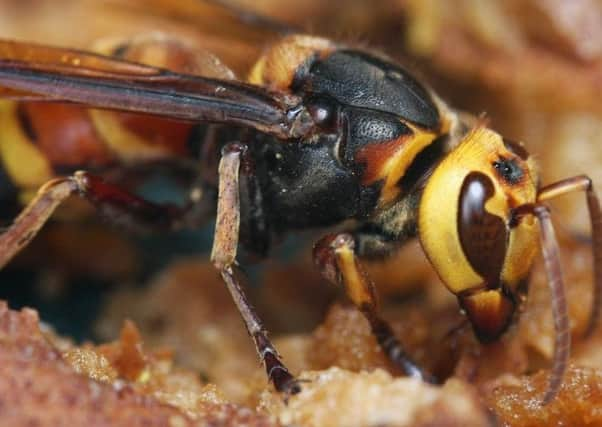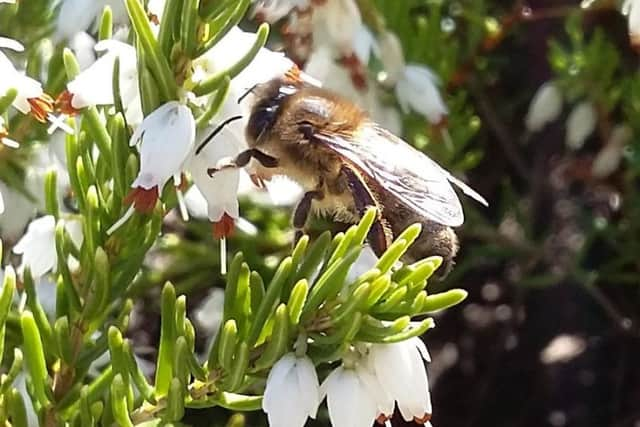How beekeepers are waking up to spring


Hornets are magnificent creatures. They get through the winter the same way that a bumblebee does which is via pregnant queens making a nice comfortable home underground where they can go through a form of hibernation.
When they come out in Spring they aren’t, at first, any threat to honeybees because the queens simply collect nectar from flowers to build up their strength. They also chew away at old wood and start building nest out of paper that are usually high up in trees.
Advertisement
Hide AdAdvertisement
Hide AdThe nests start small but rapidly build up as the queen gives birth to larva that eventually turn into workers who help her produce a lot more larvae and a lot more workers. It is when she has significant numbers of larvae that the hornet starts to become a problem for bees.


Hornets chase down bees, bite off their heads and collect the tasty flight muscle meat to take home for their children. It is the young inside the nest that need protein from meat and they can get through a lot of it when a colony starts to build up towards a total of around 1,500 hornets.
One of the ways for hornets to catch a bee is to spot one working a patch of flowers and to hunt it down. Doing that doesn’t do much damage to a honeybee colony because it only results in a few bees being lost and if there are 40,000 bees in the colony one or two less isn’t a big worry.
It is when the hornets find where the bee hives are kept that problems start to occur. It then becomes a lot easier to spot bees as they return home and pick them off systematically.
Advertisement
Hide AdAdvertisement
Hide AdThe problem with Asian bees is that when they succeed in doing this our bees haven’t evolved very good defences against their attacks. They can catch and kill a lot more bees than the native European hornet.


Over the channel in France they arrived a few years ago and have weakened or destroyed a significant proportion of hives. They are such strong fliers that it was immediately feared that sooner or later they would get across the channel so no one was terribly surprised when they were spotted way down south in Woolacombe. That outbreak was destroyed and every bee keeper breathed a sigh of relief.
Now that they have got to Bury we have to assume that they are a lot further into the British Isles and have been able to over winter here unseen. Someone somewhere in Yorkshire could see one this summer.
Hornets aren’t usually any danger to humans unless you get close to their nests and you’d have to be climbing quite a way up a tree to run much risk of that.
Advertisement
Hide AdAdvertisement
Hide AdSo unless you are allergic to stings it is pretty safe to stand as still as you can and take a long hard look at an insect that looks bigger and tougher than a wasp and to try and check its markings. European hornets are a beautiful golden yellow colour and look significantly more shiny than a wasp. Asian ones have an entirely dark body but have heads that look orange when you are staring straight at them.
If you do think you’ve spotted one then please report it to the National Bee Unit bee inspectors who will know how to deal with it.
With luck and vigilance, it is just possible that we will be able to keep the Asian hornet out of England. If it gets established in Yorkshire then bee keepers are going to have to spend a lot of time and money on adapting hives and apiaries to make it harder for the Asian hornet to hunt down our bees.
Fortunately, there is one thing we can do that is quite simple and cheap. Apparently if there is lots of long grass and untidy vegetation near the entrances to hives it is a lot easier for honeybees to dodge attacks and get back into a hive safely. I have been looking for a good excuse to not bother keeping the apiary over tidy. I may just have found the perfect justification for my laziness. I am no longer a bit of a feckless bee keeper who can’t be bothered. I’m now responsibly providing cover for my poor bees against alien invaders.